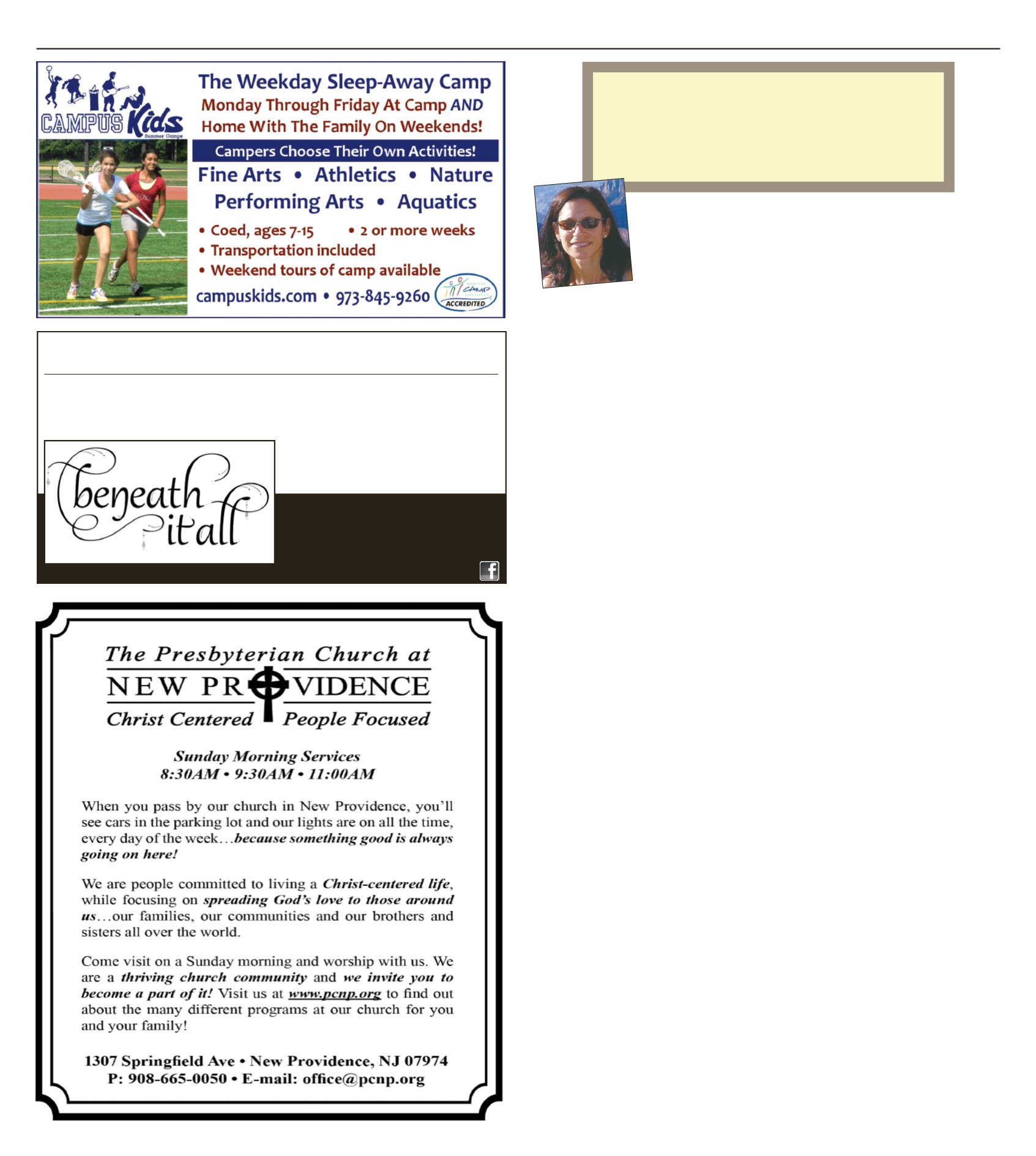

PAGE 98
THE WARREN-WATCHUNG CONNECTION
DEC 2016/JAN 2017
Bridging Fashion and Function for All Sizes Celebrate your unique beauty with fashionable, functional lingerie. Enjoy an extensive size range (A-K) and personalized fittings to feel beautiful beneath it all. 15 Division Street Somerville, NJ 08876 908.722.3622 www.beneathitallbras.com Facebook.com/beneathitallbras beautiful lingerie for the modern woman H ours: Tue. 11-7 • Wed. 11-7 Thur. 11-7 • Fri. 11-8 • Sat. 10-5 And by Special Appointment Closed Sunday & Monday Watch with glittery eyes the whole world around you because the greatest secrets are always hidden in the most unlikely places – Roald Dahl New Jersey is home to 12 National Park sites, including Paterson Great Falls, the sec- ond most powerful waterfall east of the Mississippi. The Great Falls tower 77 feet high over the Passaic River and stretch 300 feet wide, pouring two billion gallons of water into a river canyon every day. Many famous artists have painted the view of the falls from below. Alexander Hamilton founded Paterson in 1792 as a key man- ufacturing city to make America economically inde- pendent. Using waterpower from the Great Falls, mills were built in the valley below, attracting entrepreneurs and workers who were seeking the “American dream.” Paterson was America’s first planned industrial city, centered around the Great Falls. It soon became the country’s leading manufac- turer of cotton, silk and loco- motives. Known as “Silk City” between the 1880s and 1920, Paterson became the country’s center for dyeing and weaving silk. The first duck cloth for sails, the first continuous sheet paper, the first revolver by Samuel Colt, and the first sub- marine by John Holland were all invented there. The Rosen and Sons Mill, founded by Polish immigrant Jacob Rosen, was the leading American manufacturer of silk ribbon and the pioneer of rayon. Eleanor Roosevelt wore a Paterson silk dress at her hus- band’s second inauguration. The mills attracted workers from Europe, making Paterson the multi-ethnic city it still is today. When Hamilton found- ed the city, there were only 10 houses there. It soon became the fastest growing city on the East Coast. After many years, a hydroelectric plant was built, which still provides energy to thousands of homes in the area. The mill workers of Paterson also began the fight for labor rights in 1828 when the first factory walkout took place there. In 1913, one of the largest strikes in American History shut down the silk mills for six months until shorter days, fair pay and better work- ing conditions were granted. In 1882, a union leader from Paterson organized the coun- try’s first Labor Day. The 118-acre site, just 12 miles west of New York City, is a glimpse into the industrial his- tory of our nation. The falls provide a scenic backdrop where visitors can learn about and imagine what 19th centu- ry American life was like right here in New Jersey. PATERSON GREAT FALLS NATIONAL HISTORIC PARK By: Jill Stolz www.theconnectionsnj.com

















